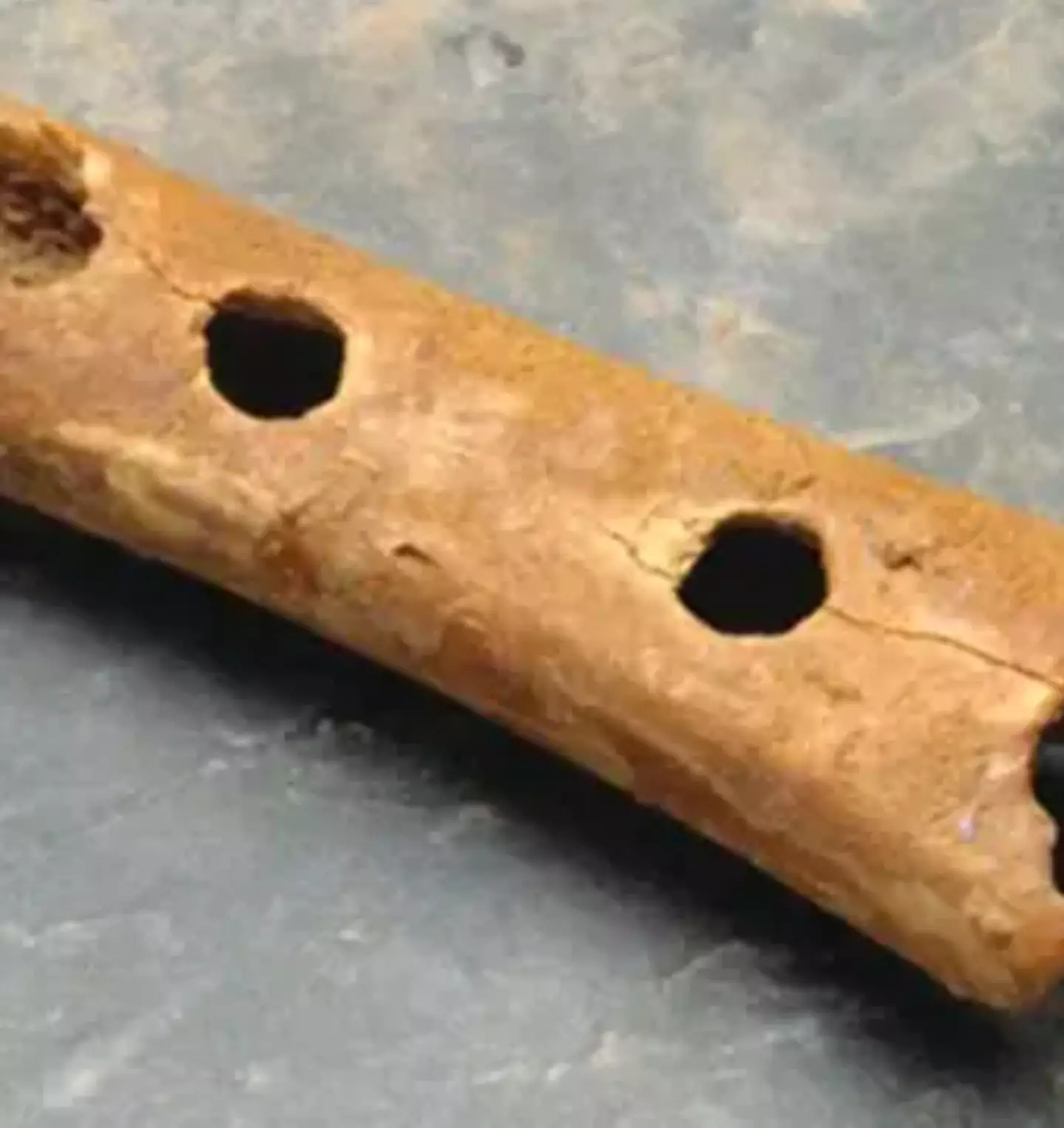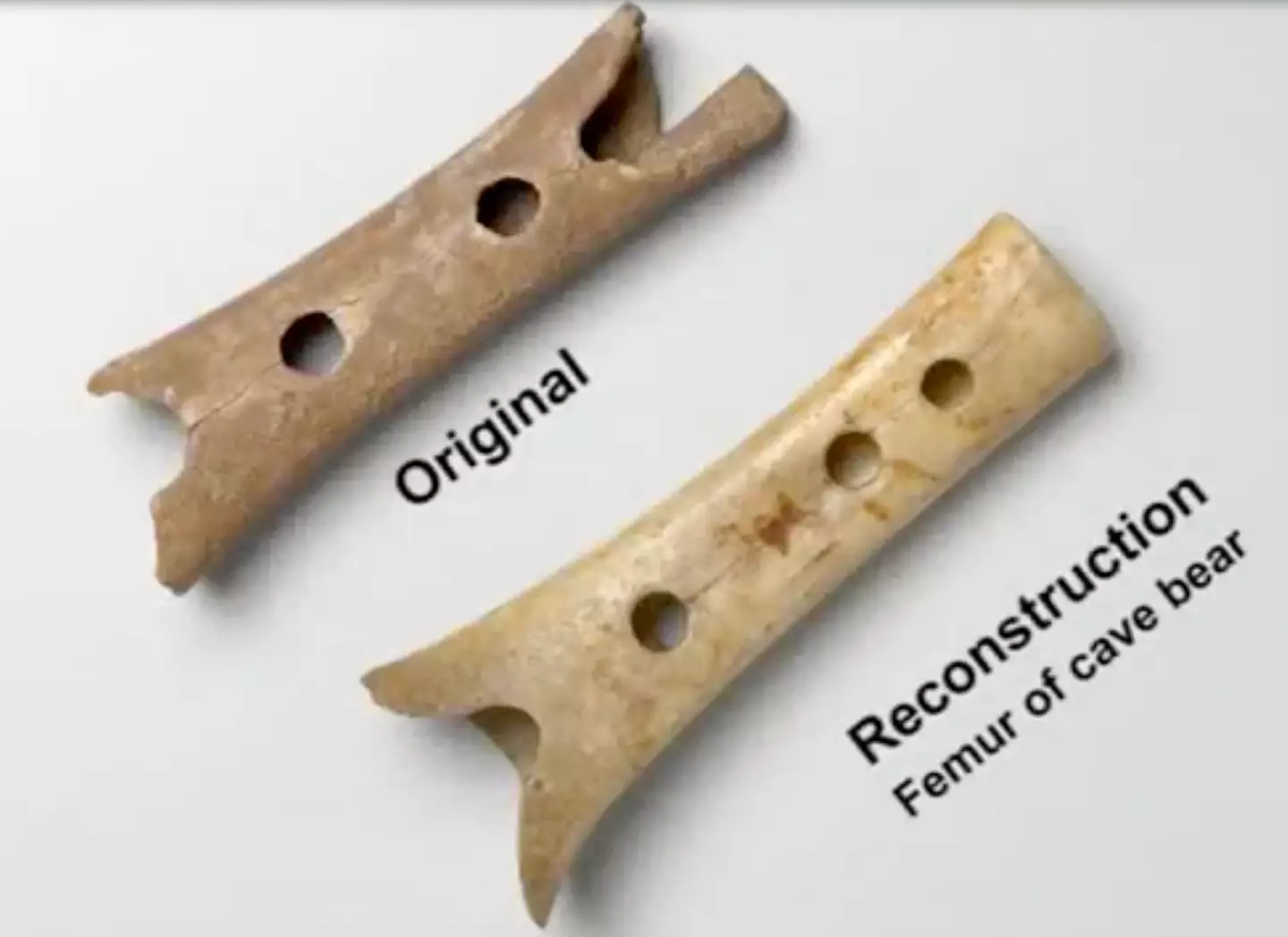A team has created haunting music by reconstructing a prehistoric flute.
There are rare occasions where modern humans can feel some distant connection to people who walked the earth thousands of years before us. Cave paintings are one example, where one of our distant ancestors left a hand print on a cave wall.
The feeling that someone stood in the same spot as you that long ago and touched that same spot is extraordinary - though don't actually touch it for the sake of conservation.
Advert
Some spots are home to entire histories of art. Aboriginal rock art paintings in Australia document thousands of years of human history, including abstract images as well as pictures of animals. Some are even thought to depict the arrival of the first europeans, which would ultimately prove catastrophic for indigenous civilisations who had lived there for thousands of years.
Most connections to our very distant past are visual giving us some idea of how our ancestors saw the world, but not so much how they heard it. However, one team has now tried to remedy that, by reconstructing a prehistoric instrument.

The instrument is a Neanderthal flute dating back some 50,000 years, and it was carved from the bone of a cave bear.
It would have had four finger holes along its length. In an extraordinary development, the notes produced by these holes match elements of a diatonic scale, a fundamental part of music even today.
Musicologist, Bob Fink, explained in 2015: “[The notes] are inescapably diatonic and will sound like a near-perfect fit within ANY kind of standard diatonic scale, modern or antique.”
What is extraordinary is that the flute was not made by homo sapiens, but by Neanderthals. The two species are likely to have coexisted with each other, though Neanderthals ultimately died out. Some suggest this was because we outcompeted Neanderthals for food and resources, actively exterminating them, or introduced diseases to which they had poor immunity. There is also strong evidence of inter-breeding between homo sapiens and Neanderthals.

If nothing else, the haunting sound of a reconstructed Neanderthal flute shows that we may have had more in common than we now commonly believe.
The flute is on permanent display in the Slovenia National Museum.
It's description says: “The oldest flute in the world. It is pierced by two well-preserved and three damaged holes. The flute from Divje Babe is the oldest of Palaeolithic flutes known to the present throughout the world, and at the same time the first reliably proven to be made by a Neanderthal.
“As far as we now know, Neanderthals were the first among the closest human relatives that made musical instruments.
“The flute from Divje Babe testifies to the fact that Neanderthals were capable of such an abstract and uniquely human activity as creating music.”
The high-pitched tones of the flute are extremely eerie. While we have no way of knowing what kind of music was originally played on the flute, beyond its tuning, the music gives us a rare glimpse of how our prehistoric past may have sounded.
